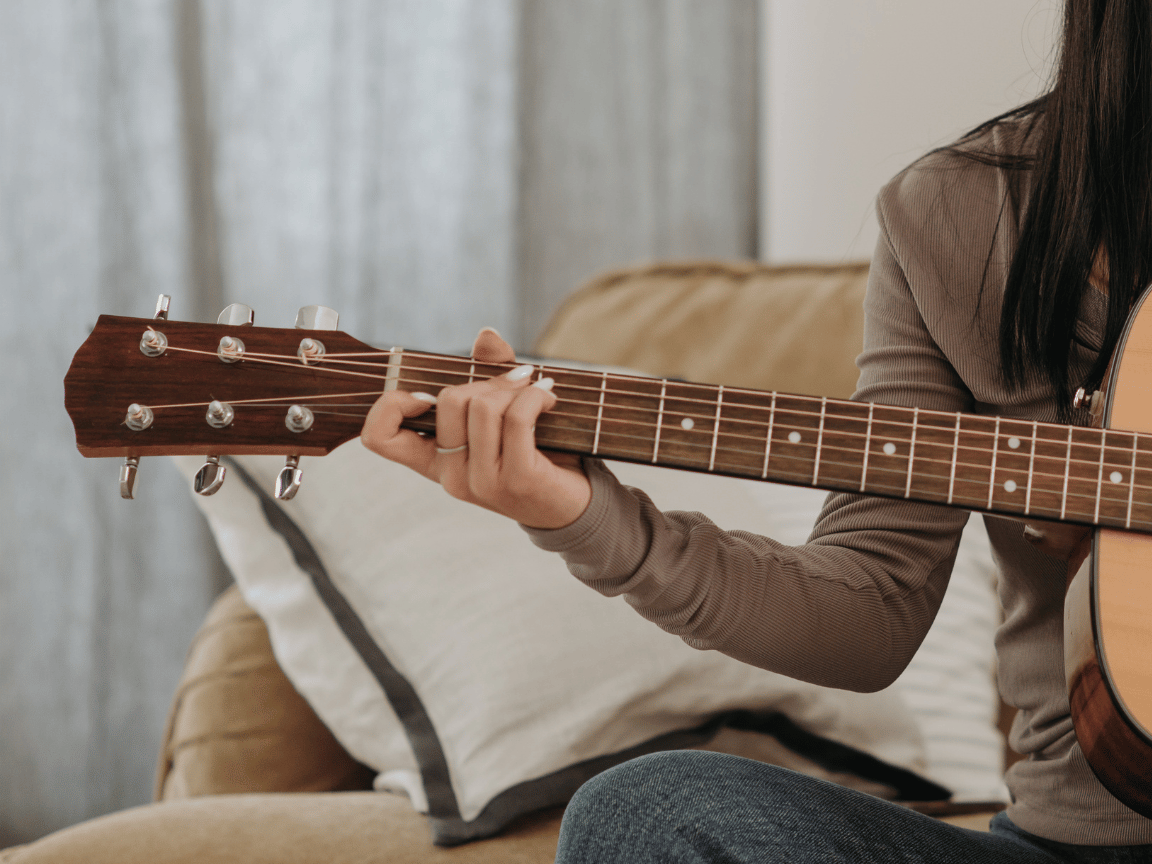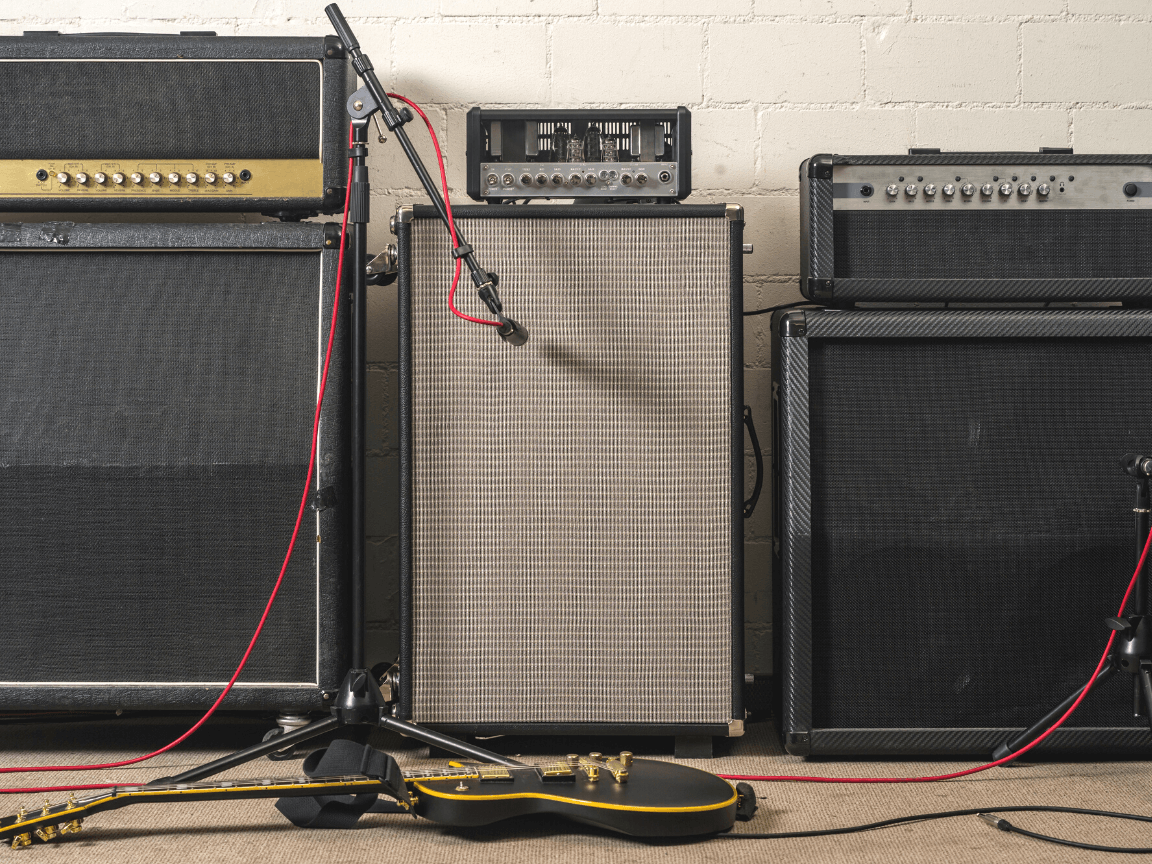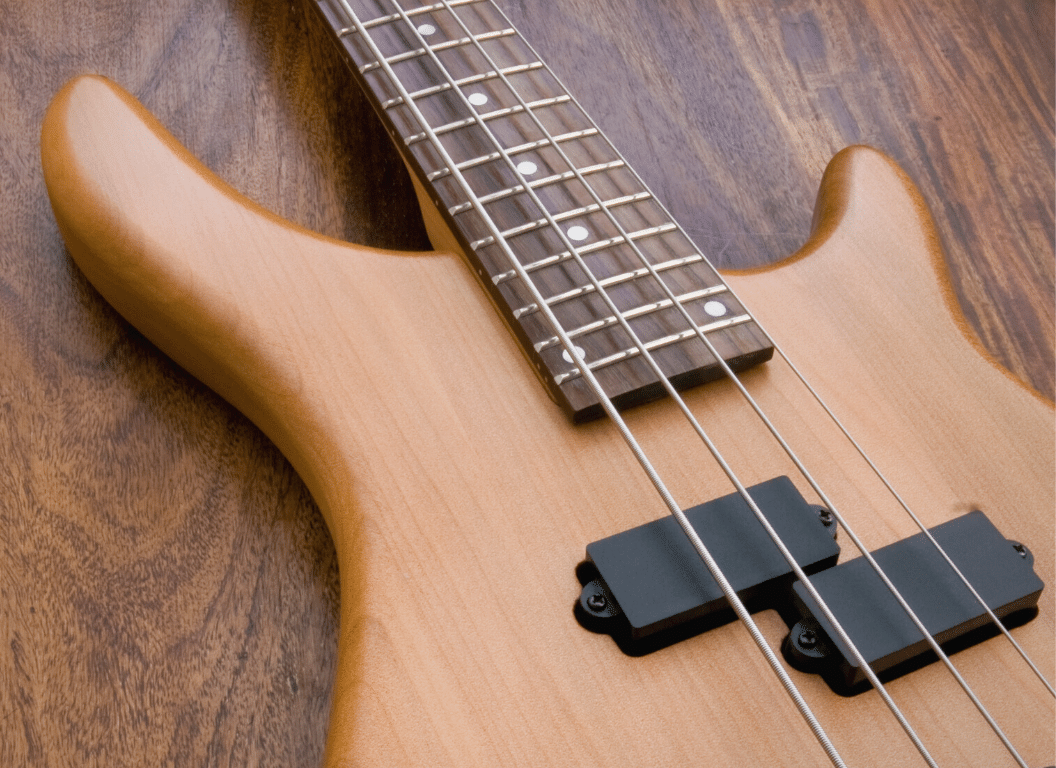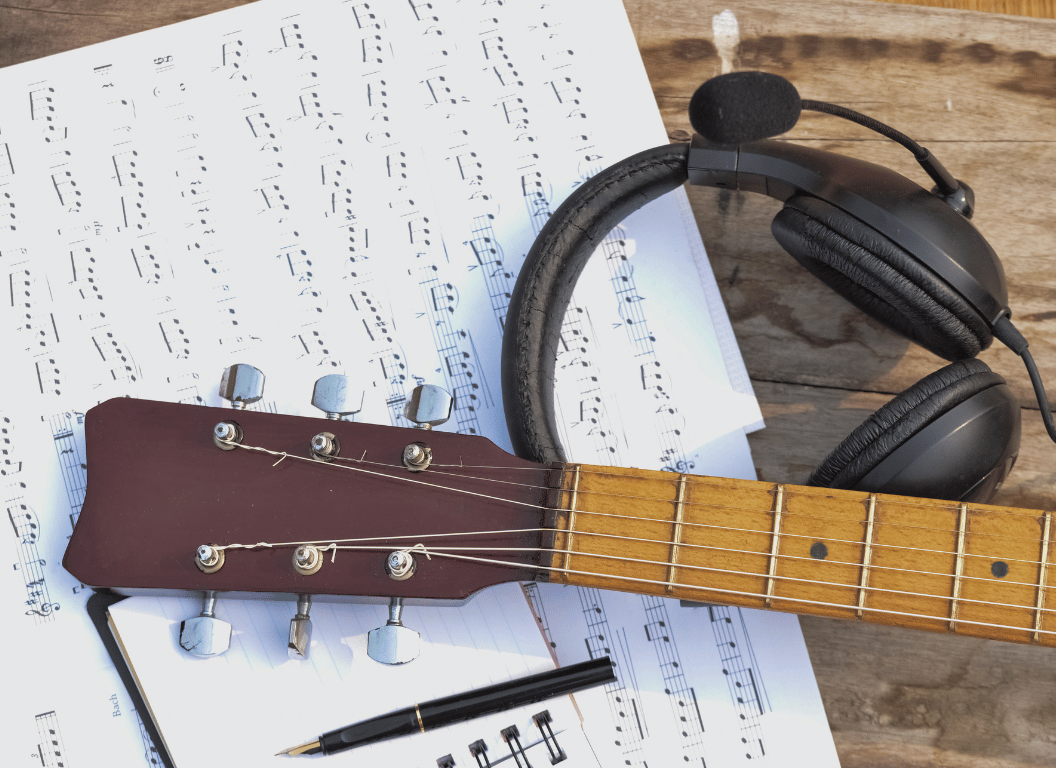The debate surrounding the ability of left-handed individuals to play right-handed guitars is convoluted and often subjective.
Yet, for left-handed people interested in embracing the beautiful art of guitar playing, this question becomes critical.
It is known that musical instruments are typically designed for right-handed usage, leaving left-handed individuals at a crossroads.
This article aims to dissect the possibilities and complexities associated with this question.
It explores the feasibility and implications of a left-handed person playing a right-handed guitar while highlighting various aspects to consider.
By the end of this article, you should acquire a broader understanding of this intriguing musical dilemma.
Table of Contents
- Can A Left-handed Person Play A Right-handed Guitar?
- Differences Between Right-Handed and Left-Handed Guitars
- Effectively Playing Right-Handed Guitars as a Left-Handed
- Potential Challenges Faced by Left-Handed Guitar Players
- How to Restring a Right-Handed Guitar for Left-Handed Play?
- Reversed Play Vs. Special Left-Handed Guitars
- Tips for Left-Handed Guitarists Playing Right-Handed Guitars
- Mastering Chords and Fingering Techniques
- The Bottom Line
Can A Left-handed Person Play A Right-handed Guitar?
Yes, a left-handed person can play a right-handed guitar. However, it may be less intuitive and potentially more challenging due to the reversal of string and chord positions. Alternative options include restringing a right-handed guitar to suit left-handed play, or investing in a specially designed left-handed guitar.
Delving deeper into the world of guitarist hand orientation, it becomes apparent that this topic encompasses more than just whether a left-handed person can play a right-handed guitar.
Exploring this subject further allows for a more nuanced understanding of the challenges and solutions available to left-handed players, the impact of hand orientation on playing style, and the interesting stories of famous left-handed guitarists who have navigated this very scenario.
In the subsequent sections, we will be covering these intriguing related aspects.
Differences Between Right-Handed and Left-Handed Guitars
To the inexperienced eye, right-handed and left-handed guitars may appear to be identical, but there are vital differences that affect playability and sound production.
– Physical Design and Orientation
Construction and orientation are paramount differences between right-hand and left-hand guitars.
Guitars designed for right-handed users have the thicker strings on the top of the fretboard and thinner strings at the bottom.
Contrarily, left-hand guitars exhibit an opposite string arrangement with the thicker strings at the bottom of the fretboard and the thinner strings on top.
The positioning of the guitar knobs and switches also differs.
They are generally found on the top side of right-handed guitars and on the lower side for left-handed ones.
Construction and orientation are paramount differences between right-hand and left-hand guitars.
This difference brings a distinct feel and ease of control according to the player’s dominant hand.
A misaligned orientation can restrict a player’s ability to manipulate the controls smoothly while playing.
– Pickup Orientation and Sound Quality
The pickup orientation in the respective guitars substantially affects the sound quality.
Manufacturer design pickups in a way that influences the string vibration according to the string’s thickness.
Consequently, when a guitar is played upside down, the pickup captivates an unfamiliar tone due to the reverse string thickness.
This can result in a unique and atypical sound, which might not always be desirable.
The pickup orientation in the respective guitars substantially affects the sound quality.
This is one reason why simply restringing a right-handed guitar for left-handed play may not always attain the expected sound quality.
Therefore, knowing the key differences and selecting the appropriate guitar can significantly improve a player’s comfort, ease of playing, and sound production.
By watching the video above, you can explore and visualize these differences between right-handed and left-handed guitars.
You can also grasp why, contrary to popular belief, a left-handed player might not necessarily find it convenient or effective to play a right-handed guitar.
Effectively Playing Right-Handed Guitars as a Left-Handed
When it comes to playing the guitar, hand dominance can play a significant role.
For most right-handed people, the motion of strumming and pick-handling comes more naturally, which often leads to the question: Can left-handed people play right-handed guitars effectively?
– Switching Hands and Learning to Play
The simple answer to this query is: Yes, left-handed people can indeed play right-handed guitars effectively.
However, this process may require some additional time, determination, and dedication to reach the desired skill level.
The key factor for success in this case centers on persistence and constant practice.
In some instances, left-handed individuals have even found that they prefer playing a right-handed guitar, as it allows them to make unique and creative adaptations to their playing style.
This adaptability can lead to the creation of original music styles that can set one apart from traditional players.
Left-handers can tap into their innate flexibility and adapt themselves to handle musical instruments designed for right-handed people.
– Achieving Symmetry With Ambidexterity
Being left-handed can have certain advantages in playing the guitar, especially when ambidexterity comes into play.
Ambidexterity, the ability to use both hands with equal effectiveness, can be developed over time with dedicated practice.
This can be especially useful in overcoming the challenges faced when trying to play a right-handed guitar as a leftie.
With sufficient practice and time, left-handed players can learn to mirror the standard right-hand techniques, enabling them to play right-handed guitars with efficiency and ease.
It’s important to note that achieving this symmetry may take time and patience and that the journey of a left-handed person learning to play a right-handed guitar may not always be a smooth one.
However, the reward of being able to play this versatile instrument can make the effort worthwhile.
– Importance of a Properly Adjusted Guitar
One crucial detail that left-handed individuals interested in playing a right-handed guitar need to consider is getting their instrument properly adjusted.
An innately right-handed guitar may need some changes to accommodate the needs of a left-handed player, especially in areas like the strumming and the fretboard.
Proper setup and adjustment can make a significant difference in the overall playability and comfort of the instrument for a left-handed guitarist, thus dramatically improving their playing experience.
A professional guitar tech can make these adjustments easily, ensuring that the guitar is more comfortable and easier to play for the left-handed individual.
To sum up, while playing a right-handed guitar as a left-handed person may present its own set of challenges, it is entirely achievable with practice, patience, and a correctly adjusted instrument.
Potential Challenges Faced by Left-Handed Guitar Players
Becoming a guitarist is a dream cherished by many, but when you are left-handed, you may face some unique challenges.
The musical world has traditionally been oriented towards right-handed individuals.
– Finding Appropriate Instruments
The first challenge faced by many left-handed individuals is the difficulty in finding appropriate instruments.
Although left-handed guitars are available, they are not as readily available or as diverse in design as their right-handed counterparts.
This lack of options can make it difficult for left-handed guitarists to find the instrument that is right for them.
A significant challenge many left-handed individuals face is the difficulty in finding appropriate instruments.
This issue can be frustrating for beginners who are eager to start learning but can’t find the right tool to do so.
Luckily, there are certain brands such as Fender and Gibson that offer a wider range of left-handed instruments.
– Adapting to Right-Handed Play
The second challenge involves the difficulty in adapting to right-handed play.
Many left-handed individuals attempt to learn on a right-handed guitar, which can be difficult and uncomfortable.
There is a certain degree of retraining required for the left-handed player to familiarize with the right-handed guitar.
Another significant issue a left-handed person faces is the difficulty in adapting to the right-handed method of playing.
This adaptation requires extra practice and patience.
However, with persistence, it’s entirely possible to master the skill.
In fact, some left-hended guitarists even state that they believe they have an advantage when it comes to fingerpicking styles.
– Lack of Learning Sources
The third challenge is the lack of learning sources.
Most instruction manuals and classes are designed for right-handed players.
There are comparatively fewer resources available to those who wish to learn using left-handed instruments or to adapt right-handed techniques to better suit their needs.
The scarcity of left-hand specific resources can make learning the guitar more challenging for left-handed individuals.
Most instruction manuals and classes are designed for right-handed players, making the learning process more challengin for left-handed individuals.
This implies that left-handed guitarists will, in most cases, have to work harder to get the same results.
Despite these challenges, many left-handed guitarists have successfully learned to play and perform.
The video offers valuable insights into the debate about whether left-handed people should learn to play the guitar right-handed or invest in a left-handed guitar.
Most importantly, watching the video can provide reassurance and guidance for left-handed beginners struggling with these challenges.
How to Restring a Right-Handed Guitar for Left-Handed Play?
To begin with, it’s crucial to first understand why a guitar needs to be restrung for left-handed play.
Standard right-handed guitars are strung in such a way that the top string is the thickest (or the lowest sounding), and the bottom one is the thinnest (or the highest sounding).
However, when a right-handed guitar is played left-handed or upside down, the order of the strings is reversed, making it challenging to play.
Therefore, to make the guitar easier to play for left-handed individuals, the guitar needs to be restrung. This means changing the order of the strings so that it matches the standard string order on a left-handed guitar.
– Step-by-step Guide to Restringing
Here is a brief step-by-step guide on how to restring a right-handed guitar for left-handed play:
Firstly, remove all of the strings from your guitar.
Start with the low E string (the thickest one) and work your way down to the high E string (the thinnest one).
It is crucial to ensure that you loosen the strings by turning the tuning pegs before trying to remove them.
Removing taut strings can potentially damage your guitar.
Next, you install the strings in reverse order.
The thickest E string which is typically on the top for right-handed guitars goes on the bottom and the thinnest E string which is typically on the bottom, goes on top.
Thread each string through the appropriate bridge hole or tailpiece (depending on your guitar model), bring it up to the headstock, and feed it through the appropriate tuning peg.
You must tune the guitar to ensure that it produces the right notes.
Finally, tune the guitar using a tuner.
Starting with the high E string (now positioned at the bottom), tighten the string by turning the tuning pegs until you achieve the right tune.
Repeat this process for all the other strings, moving upwards to the low E string (now positioned on top).
While the process of restringing may seem daunting at first, with patience and practice, it becomes relatively straightforward.
And the result is surely worth the effort.
There is also the additional advantage of drastically broadening your choice of guitars if you master the art of restringing.
Not all guitar models are available in left-handed versions, and some left-handed guitarists may find a specific right-handed model that appeals to them.
Knowing how to restring a guitar provides the flexibility necessary to use any guitar that tickles their fancy.
Reversed Play Vs. Special Left-Handed Guitars
As a left-handed guitarist, you essentially face two main choices: to either purchase a specially designed left-handed guitar or to flip a right-handed guitar for left-handed play, known as reversed play.
While each option has its perks and pitfalls, various factors come into play, such as your personal comfort, ease of play, the type of music you wish to engage in, and even cost considerations.
– The Reversed Play Option
Flipping a right-handed guitar for left-handed play, otherwise known as reversed play, can be an economic and strategic choice.
It bypasses the challenge of finding a specially made left-handed guitar, which can sometimes have a limited variety in design and may even cost more.
Despite this, a crucial caveat exists: the restringing and realignment of the guitar controls to suit left-handed play, a process that may seem daunting to many.
Moreover, the contours and cutaways designed for right-handed play might not offer the same level of comfort when flipped.
However, iconic musicians like Jimi Hendrix, a well-renowned left-handed guitarist, successfully adopted this approach.
Despite this, a crucial caveat exists: the restringing and realignment of the guitar controls to suit left-handed play, a process that may seem daunting to many.
This restriction could contribute to developing a unique playing style as it forces the guitarist to adapt and overcome the design limitations.
Check how an experienced guitar teacher navigates this specific challenge and relearns guitar in a day:
In the video, you’ll witness the struggles and needed adjustments firsthand, which can provide invaluable insights on how to deal with similar circumstances.
– The Special Left-Handed Guitars Approach
Specially designed left-handed guitars, on the other hand, offer an entirely different playing experience.
They eliminate key challenges faced during reversed play, such as misaligned control layouts and uncomfortably positioned body contours.
Particularly for beginners, access to an actual left-handed guitar can significantly simplify the learning curve, aiding in mastering chords and developing efficient strumming patterns more rapidly.
Nonetheless, these guitars are not always readily available and can be a bit more expensive than their right-handed counterparts.
Particularly for beginners, access to an actual left-handed guitar can significantly simplify the learning curve.
Despite the investment, having a guitar designed to complement your dominant hand can revamp your playing experience, boosting your comfort and confidence levels.
– Making Your Choice
Deciding between reversed play and specially designed left-handed guitars ultimately comes down to personal preference.
Playing both types of guitars, if possible, can give you a more definite feeling of which one suits your playing style and comfort the most.
Akin to the rationale presented from the explored perspectives, your approach should revolve around where you find the best balance between sheer comfort and enjoyable play.
Make your decision based on your playing style, budget, and the guitar that gives you the most confidence and satisfaction while playing.
Make your decision based on your playing style, budget, and the guitar that gives you the most confidence and satisfaction while playing
Rest assured that well-acclaimed guitarists exist in both spectrums, implying that irrespective of your choice, you can prosper as a left-handed musician.
Remember, the guitar is merely a tool, it’s your musicianship and skill that will ultimately shine through.
Tips for Left-Handed Guitarists Playing Right-Handed Guitars
While trying to play right-handed guitars may prove challenging for lefties, it’s totally achievable with the right guidance and perseverance.
– Learn to Play Upside Down
One of the first strategies for left-handed players using right-handed guitars is learning to play it upside down.
This implies that the top string is now at the bottom and vice versa, which can be a bit confusing to start but quite effective with practice.
While this does not come naturally and can be challenging, it is a viable option and has been used by successful musicians in the past.
Translating chord diagrams and tablature to this reversed string set up can be a tricky task.
However, persisting with this setup can significantly aid a leftie in playing a right-handed guitar comfortably.
– Master Reversed Chord Diagrams
A crucial aspect of playing right-handed guitars for left-handed people is understanding reversed chord diagrams.
Since the guitar is flipped, this means the chord diagrams should also be flipped or mirrored in your mind.
This task requires a solid understanding of chord diagrams and how to apply them in reverse.
A mentor or tutor with experience can be extremely helpful in learning reversed chord diagrams.
Online resources and tutorials dedicated to helping left-handed players can also be extremely beneficial in this process.
– Develop Ambidexterity
Developing a level of ambidexterity can also be immensely helpful for left-handed individuals playing a right-handed guitar.
Being able to use both hands skillfully can make the process of learning and adapting much smoother.
This not only enhances a player’s ability to play but also lends a certain fluidity and versatility to their guitar playing skills.
Practicing regular exercises to improve right-hand dominance can contribute to achieving this ambidexterity.
It’s also essential to remember that patience and persistence play a massive role in this journey.
– Use a Light Gauge String Set
Another tip for left-handers is to opt for a light gauge string set while diving into right-handed guitars.
Since lefties will be using their non-dominant hand for intricate finger movements, a lighter string can make the transitioning period a bit easier.
Lighter strings require less pressure and can be easier for the left-handed player to manage with their right hand.
As your skill improves and your fingers become more used to the chords, you can progress to harder string sets.
Moreover, constantly trying to improve, practicing regularly, and not getting disheartened during the initial stages are surefire ways to adapt to right-handed guitars successfully.
Mastering Chords and Fingering Techniques
The world of guitar playing can often seem skewed towards the majority right-hand dominant population, but that’s not to say left-handed individuals can’t thrive in it too.
Even though left-handed individuals account for only about 10% of the population, there are plenty of renowned left-handed guitarists who have mastered the instrument.
This section will tackle mastering chords and fingering techniques for left-handed play.
– The Basic Chord Shapes
To start off, it is important to understand that the basic chord shapes remain the same, regardless of whether you’re right or left-handed.
One must still learn to form the D, E minor, G, C, A, A minor, E and the F chord shapes – commonly regarded as the fundamental chords for beginners.
These shapes, when fingered properly, form sounds that are the building blocks for many songs.
By learning these chords, left-handed individuals make significant strides in their journey towards mastering the guitar.
While the chord shapes are the same, their positioning on the fretboard is inverted for left-handed play.
This means that the sequence of fingers on the fretboard would be mirrored to accommodate left-handed play.
Practicing to form these mirroring shapes can help in developing a feel for the guitar which in turn would lead to smoother playing.
Also, while playing, the ‘downstroke’ strum should be done towards you while the ‘upstroke’ should be away.
It’s just like flipping a book where right page will now come in left and visa versa.
– Fingering Techniques
Fingering techniques again are mirrored for left-handed guitarists but somehow are the same.
For instance, when fretting a note, your finger should press down on the string just about the third of the way across the fret, applying enough pressure to sound the note clearly but not so much that the string is muted.
One important thing to note is that the thumb should be positioned behind the middle of the neck.
This provides the necessary leverage to press the strings against the frets, providing good sound quality.
Moreover, when changing chords, ensure that your fingers move together as one unit rather than one at a time.
This will help in smooth chord transitions, a key ingredient while maintaining a rhythmic strum pattern.
A good fingering technique is a foundation for versatile guitar playing
Once these basic techniques are mastered, advanced techniques such as hammers, pull-offs and slides can be easier to learn.
These techniques contribute immensely to the playability and the dynamic of the sound produced, and mastering them is indeed a sign of a proficient guitarist.
– Practice and Patience
For left-handed guitarists, patience is key.
Remember, mastery doesn’t come overnight.
Consistent practice coupled with patience can help overcome challenges and enhance the skill level significantly.
Consider investing in a left-handed guitar chord book or utilize online resources that provide chord diagrams specifically for left-handed guitarists.
This will act as a useful guide for practicing different chords and refining the fingering techniques.
Additionally, regular practice enables your fingers to develop the necessary strength and dexterity to fret chords correctly and it helps in creating the muscle memory needed to play efficiently.
Remember, learning to play the guitar is a journey, not a race.
Embrace the process and enjoy the progress you make along the way.
Keep practicing, keep learning and you too can master chords and fingering techniques for left-handed play.
The Bottom Line
Playing a guitar as a left-handed person certainly comes with its unique challenges, but it’s far from impossible.
Although a string reversal on a right-handed guitar might take some time and adjustments, it is a viable option for those unable to get their hands on a specifically designed left-handed guitar.
Alternatively, mastering the art of reversed play presents an intriguing approach, albeit with potential difficulty in accessibility, particularly for beginners.
Regardless of the route chosen, guitar lessons focused on left-handed techniques can be immensely beneficial.
Brands such as Fender and Gibson offer excellent options for left-hand oriented guitars.
Above all, perseverance plays a key role, as illustrated by the numerous successful left-handed players who’ve learnt to play on right-handed guitars.

More than 10 years of experience playing and writing about guitars! When not writing, I can be found strumming away some Johnny Cash tunes. Favorite all time guitar is the Gibson Les Paul. #TeamGibson




